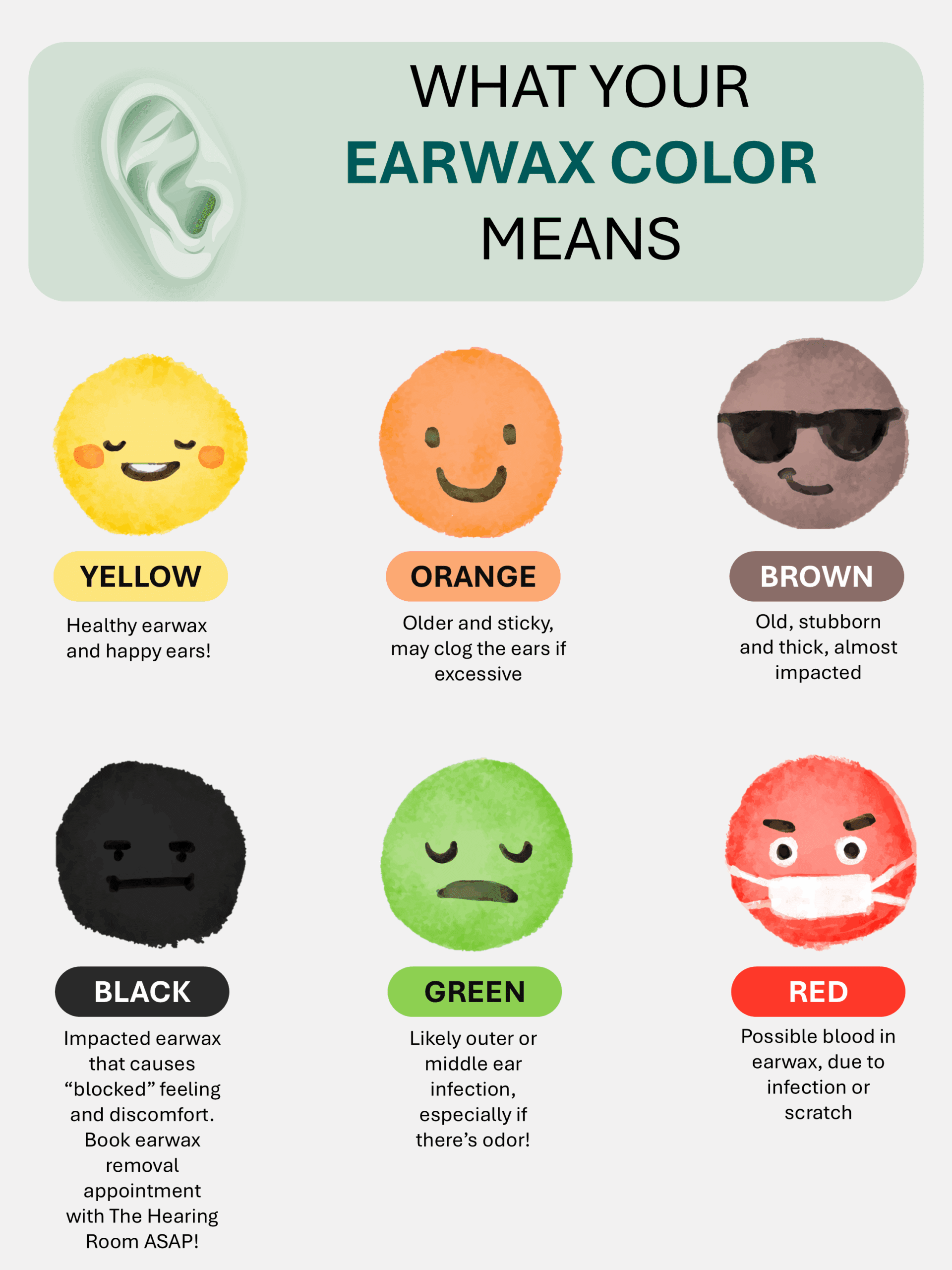Introduction
Ear wax, also known as cerumen, is a natural and essential part of our ear’s defense system. But have you ever wondered what ear wax is, why our body produces it, and what’s the difference between wet and dry ear wax? The Hearing Room Singapore is an expert on ear wax / cerumen and we’ll guide you into the fascinating world of ear wax to uncover its waxy secrets!
What is Ear Wax?
Ear wax is a sticky, yellowish or brownish substance produced by ceruminous glands in the outer part of the ear canal. It’s a complex mixture composed of dead skin cells, hair, and lipid secretions from the ceruminous glands. It received its name from its similarity to candle wax, but don’t worry as it is not flammable!
Why Do We Need Ear Wax?
Ear wax, despite its looks and texture, plays a crucial role in protecting our ears by:
- Repelling water while trapping dust, dirt, and other foreign particles
- Inhibiting growth of bacteria and fungi in the ear canal due to its acidic nature
- Lubricating the ear canal and preventing dryness and itchiness
The Different Types of Ear Wax
There are two main types of ear wax, which is dry or wet, and interestingly this is genetically determined!
Wet Ear Wax: This type of ear wax is more common in people of Caucasian and African descent. It’s characterized by a wet, viscous and sticky texture and is often associated with a stronger odor. It can also be arise due to exposure to water during swimming or diving. Wet ear wax is most easily removed using irrigation by a professional as it disintegrates easily due to its wet nature.
Dry Ear Wax: In Southeast Asia, including Singapore, dry ear wax is more common in the population. It’s characterized by a dry, flaky texture and can sometimes dislodge causing a “rustling” sound in the ear. Dry ear wax is also easily removed by irrigation as the solution will lubricate it while dislodging it at the same time. However, it may take longer than wet ear wax to remove due to it being more dry and hard when impacted.
| Wet Ear Wax | Dry Ear Wax |
| More common in Caucasians and Africans | More common in Asians |
| Viscous and sticky | Dry and flaky |
| Disintegrates easily with irrigation | May take longer to remove when impacted |
Ear Wax Colors
Ear wax can take on different colors with normal ear wax having different shades of yellow, depending on ethnicity and diet. However, there are certain abnormal colors that would require prompt medical attention by an audiologist or ENT doctor.

Other Interesting Facts About Ear Wax
- Ear wax can be impacted, causing discomfort and hearing problems
- Certain foods, like dairy products, can affect the consistency of ear wax
- Ear wax can be used to detect certain health conditions, like cystic fibrosis
Take Care of Your Ears!
Contact The Hearing Room Singapore today to schedule an appointment and let our experienced team take care of your ear wax woes. Our state-of-the-art equipment and gentle approach ensure a comfortable and safe experience.


 The Hearing Room
The Hearing Room